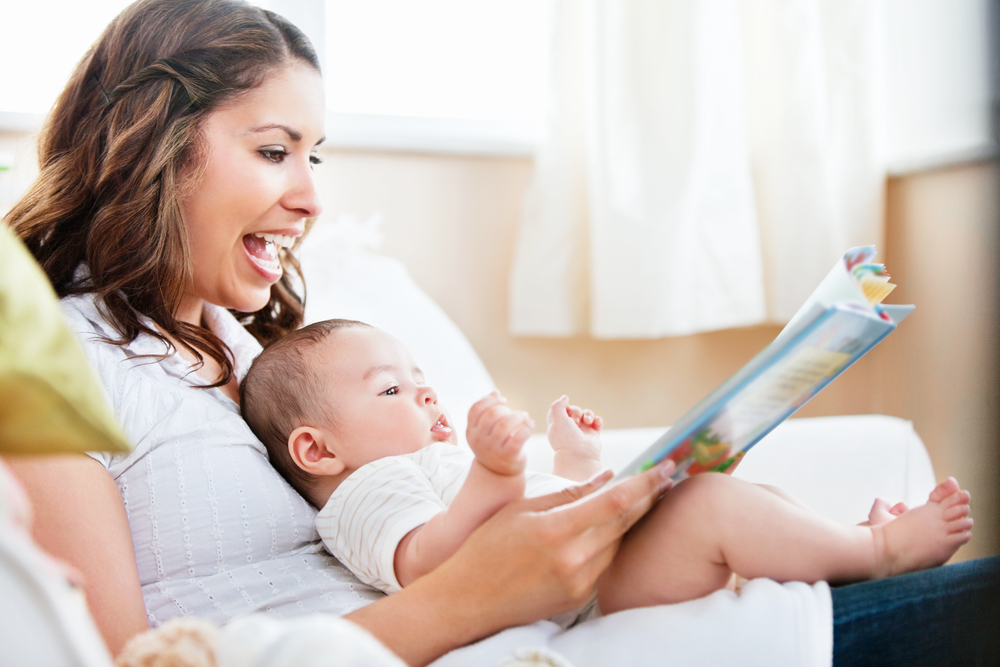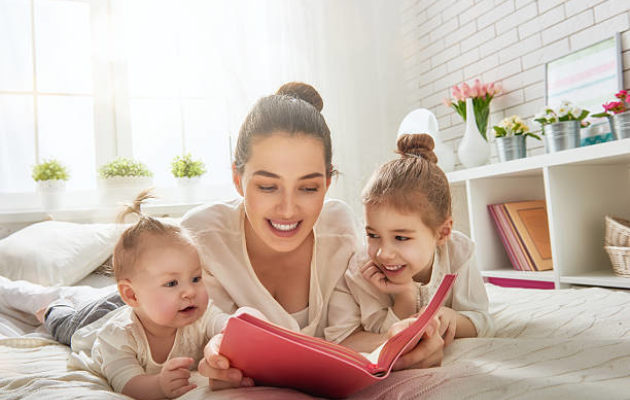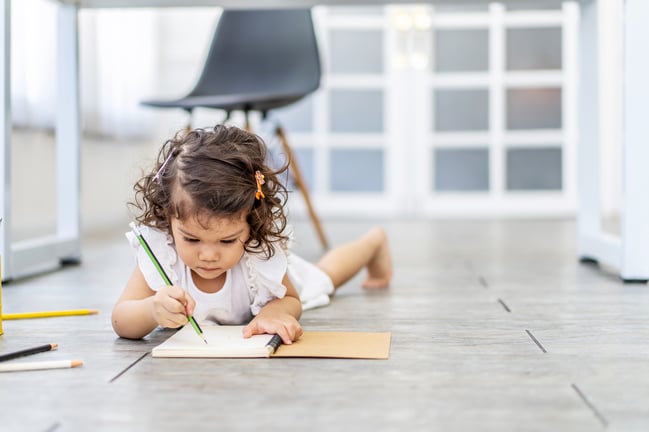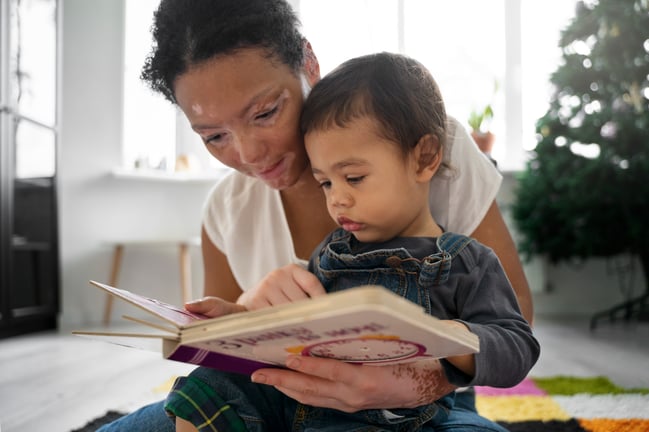
Communication, Language & Literacy
Infants (Birth to 12 months)
Components and Developmental Indicators
Infants (Birth to 12 months)
Components and Developmental Indicators
Developmental Indicators
CLL Goal-1: Through their explorations, play, and social interactions, children successfully communicate for multiple purposes.

Respond to familiar faces, voices, or simple sign language by looking or making eye contact.

Briefly pay attention to the same object the caregiver is looking at.

Communicate nonverbally by repeatedly using actions to let adults know what they want (reach out arms to ask to be held).

Respond to simple requests (“Do you want more?”) with sounds, actions, or simple sign language.

Engage in turn-taking during social and vocal play with adults and other children (babbling, imitating facial expressions).
CLL Goal-2: Through their explorations, play, and social interactions, children speak clearly and use the grammar of their home language.

Make different sounds and actions for different purposes (coo to gain someone’s attention, whimper when wet, cry loudly when hungry).

"Babble" and pretend to talk using many sounds or simple sign language from the languages used around them.
CLL Goal-3: Through their explorations, play, and social interactions, children understand and use an ever-expanding vocabulary.

Make specific sounds, facial expressions, and/or gestures for certain people and objects.
![]()
Imitate sounds, words, and gestures.
![]()
Recognize spoken or signed words used for common items, people, and actions.
Developmental Indicators
CLL Goal-4: Through their explorations, play and social interactions, children develop interest, motivation, and appreciation for literacy-based materials and activities.

Pat and chew on cloth, plastic, and board books.

Look at pictures of faces and simple objects in books and other print media.

Listen to simple and repetitive books, stories, and songs.
CLL Goal-5: Through their explorations, play, and social interactions, children comprehend, use, and begin to reflect on and analyze information in books and other media.

Show recognition or delight when caregiver reads a familiar story or sings a familiar song.
CLL Goal-6: Through their explorations, play and social interactions, children begin to recognize basic concepts of print and discover that they can get meaning from print.

Explore books and paper by tasting, mouthing, crumpling, banging, and patting.

Look at pictures while cuddling with caregiver.
CLL Goal-7: Through their explorations, play, and social interactions, children listen, identify, and respond to sounds, and develop phonological awareness.

Imitate and take turns with caregivers making different sounds.

Explore and play with sounds by themselves and with others (make “raspberries” and other sounds).
CLL Goal-8: Through their explorations, play, and social interactions, children develop knowledge of letters and the alphabetic principle.

Emerging as they show interest or enjoyment in books with familiar rhymes and sounds ("Wheels on the Bus" book, animal or transportation sounds).
Developmental Indicators
CLL Goal-9: Through their explorations, play, and social interactions, children use writing and drawing as means of communication.

Make random marks with safe, simple writing tools with the support of an adult.
CLL Goal-10: Through their explorations, play, and social interactions, children grow in their understanding of letters and writing skills.

Watch as others write and draw.
Developmental Indicators
CLL Goal-11: Through their explorations, play, and social interactions, children demonstrate an understanding that there are multiple languages and begin to communicate in another language other than their home language.

Emerging as infants listen to the sounds of their home language and other languages they hear.




